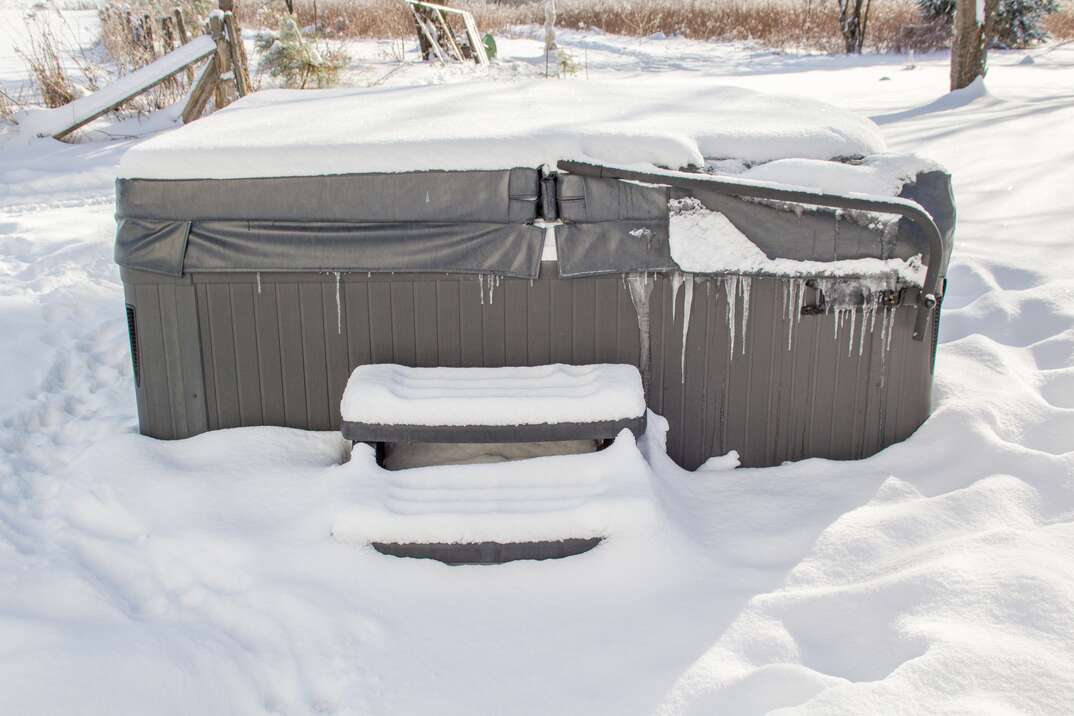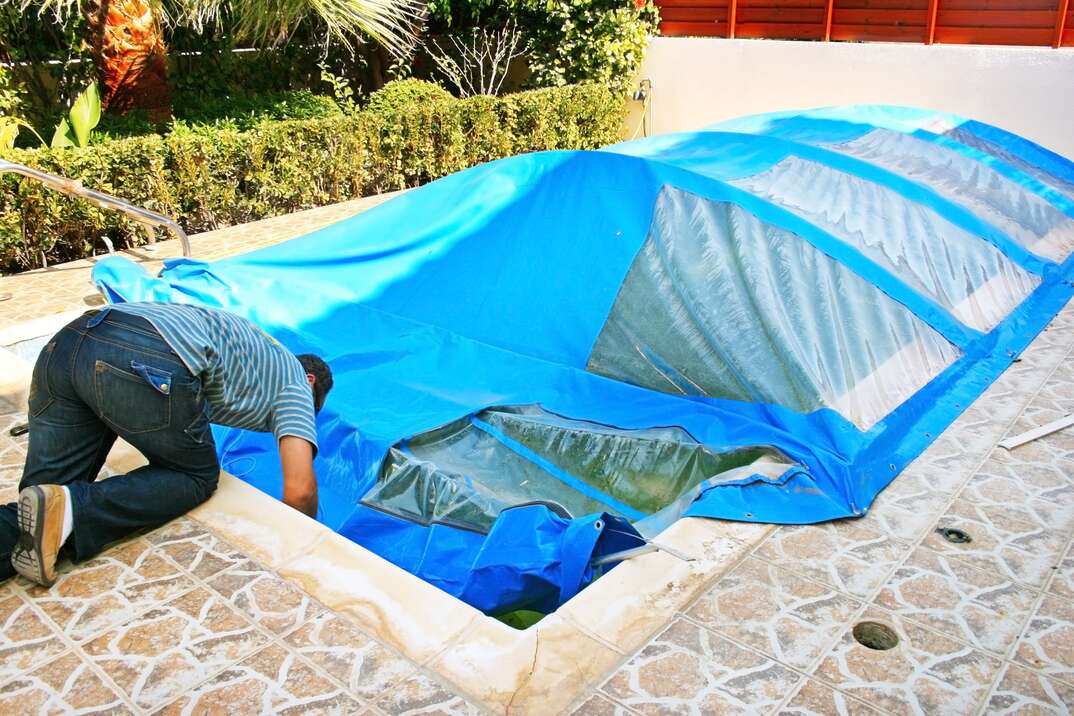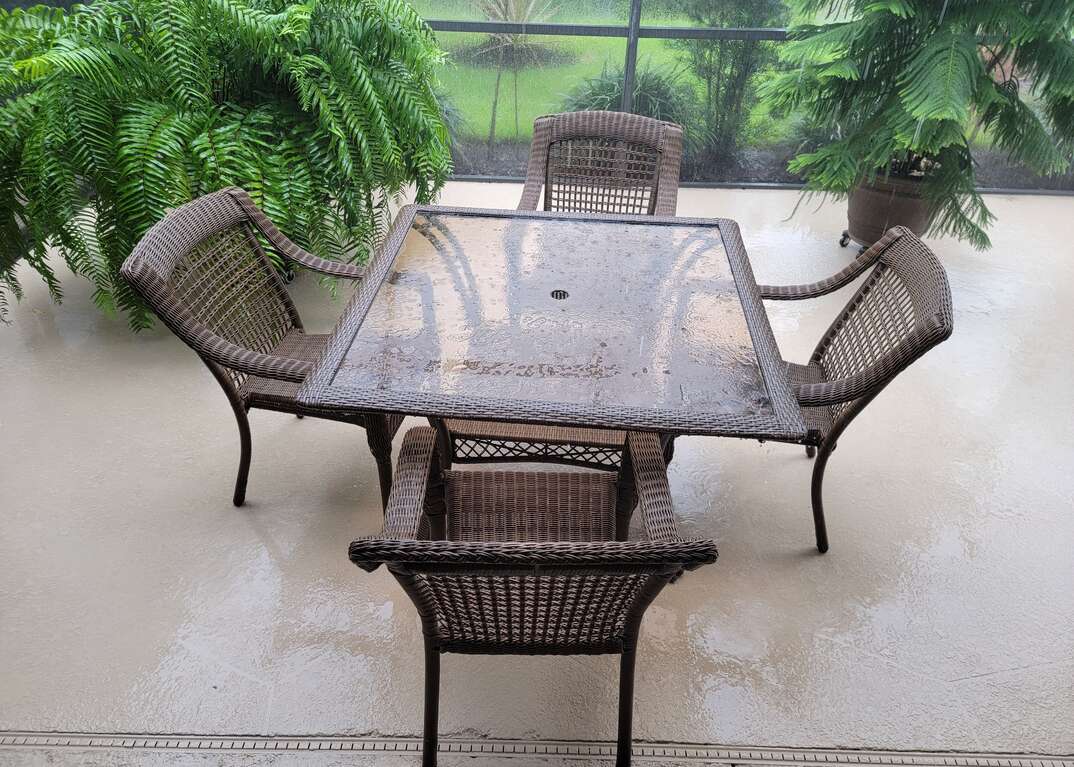How to Care for Your Hot Tub in the Winter: 6 Ways to Keep Your Tub Up and Running

Winter Hot Tub Maintenance at a Glance
- Get an insulated cover
- Maintain temperature
- Prevent frozen pipes
- Maintain water level
- Change water
- Be safe when you soak
It’s no secret that one of life’s true joys is slowly easing into a piping hot tub in the middle of winter. Not only is it a fantastic way to warm up on a cold day, but using a hot tub during the winter can also be good for your health. According to HealthLine, regular soaks in a hot tub have been found to boost your immune system by elevating white blood cell production. It can also help reduce inflammation in sore joints and muscles that can be brought on by cold weather. Aside from that, it’s just a great way to relax during those dark winter months.
This May Also Interest You: Here’s How to Close Your Swimming Pool For the Season
If you plan to soak in your hot tub throughout the winter (and let’s face it, why wouldn’t you?), you should take some time to get it ready for those colder months. Doing so isn’t terribly time-consuming, and you’ll be able to avoid many common winter hot tub issues, like frozen pipes and reduced efficiency. Ready to live your best winter life? Read on to discover the wintertime hot tub must-dos.
1. Get an Insulated Cover (and a Thermal Blanket)
If you don’t already have one, you should think about getting an insulated cover. This is one of the best ways to keep your hot tub running smoothly all winter long. And if do you have one, take some time to inspect it before the outside temps start dropping. If it’s old or damaged, you may want to invest in a new one. Over time, covers can become saturated with water, creating all kinds of problems for hot tub owners. Water saturation can cause your cover to freeze completely shut in the winter. A damaged cover can also lead to lower energy efficiency, raising your heating costs.
When choosing a hot tub cover, pick one that fits your tub well and suits the climate of your region. For example, if you live in an area with regularly heavy snowfall, you’ll want to purchase a 6-inch cover. Likewise, a 4-inch cover will suffice for a warmer climate with little to no snow. And while you’re at it, purchase a thermal blanket to place under your cover. Thermal blankets lay on the surface of the water and provide an extra layer of protection from the cold. It’ll help your hot tub maintain its temperature and keep those energy costs down.
2. Keep the Water Temperature Consistent
You may think that because it’s colder outside that you need to turn down your water temperature when you’re not actively soaking. Instead, try keeping your hot tub at the normal range between 97 and 104 degrees all winter long. First off, that’s going to be the ideal temperature to enjoy a nice and toasty soak. Secondly, adjusting the temperature up and down is going to actually increase your energy costs. The colder it is outside, the longer it’s going to take your hot tub to heat up from that lowered temperature. By keeping your hot tub at a set temperature, you can make sure it's ready for use anytime you need it.
3. Prevent Frozen Pipes
Using your hot tub in the winter isn’t without its risks. In fact, pipe freezes are a common issue for winter hot tub enthusiasts. That said, there are steps you can take to ensure your hot tub pipes stay warm (and functional) all winter long. Start by making sure the hot tub’s freeze protection program is activated. This helps keep the water in the pipes at a constant temperature.
However, if your hot tub doesn’t have freeze protection, you can make sure your pipes don’t freeze by setting your timer to cycle on for 15 to 20 minutes every hour. This will keep warm water moving throughout the pipes.
If you live in a cold climate that regularly reaches subzero temperatures in the winter, you may also want to consider installing an auxiliary freeze sensor for your hot tub. Freeze sensors monitor the temperature of the pipes and valves of a hot tub and will alert you when it drops below a certain temperature. It’s a good idea to take all the steps necessary to protect your pipes from freezing to avoid any unnecessary and costly damages to your hot tub or your home.
More Related Articles:
- Winter Exterior Home Maintenance Checklist: 6 Things to Do to Prepare Your House for Winter
- Keep Your Pool Running Swimmingly With These Maintenance Tips
- How to Install a Hot Tub
- How Much Does It Cost to Install a Hot Tub?
- How to Winterize Your Patio Furniture
4. Monitor the Water Level
Keeping an eye on your hot tub’s water levels is an essential part of hot tub maintenance. Low water levels can lead to flow issues and eventually cause your heater to shut off entirely. To ensure your heater stays active, you need to keep the water at an optimal level. This is particularly important in the winter months, because when the temperatures drop, hot water actually evaporates quicker than when it’s warm outside. That means your water levels will lower more quickly in the cold. Needless to say, if your heater malfunctions during those cold months, you could end up in quite the predicament.
5. Change the Water
It’s recommended that you change the water in your hot tub every 3 to 4 months. It’s part of basic hot tub maintenance that will keep your hot tub running optimally throughout the year.
Changing the water in your hot tub is especially important in the winter. As the hot water evaporates, it leaves behind any added solids like deodorant, perfume or lotion that might come off a bather during a soak. You may notice a grittiness on the bottom of the tub or even a strange smell.
Before winter sets in, you’ll want to completely drain and change the water in your hot tub. Once it gets cold, it will be much harder to change your water. Plus, if you change it early, you likely won’t need to spend too much time maintaining it over the winter. While you’re changing the water in your hot tub, go ahead and give your tub a good cleaning before refilling it.
6. Get Your Soak On
Using your hot tub during the winter is a highly enjoyable way to warm up in cold weather. That said, it’s not without its challenges and risks. In addition to performing maintenance to keep your tub in tip-top shape, you’ll also want to be safe when you soak. When it’s cold outside, it may be tempting to enjoy a luxuriously long soak. Still, you should only spend about 20 minutes sitting in a hot tub as any longer can lead to an increased risk of heat-related illness or injury. Finally, you also want to make sure that you are staying hydrated as you soak. Even though you may not notice it, when your body temperature rises, you sweat. Staying hydrated is an important part of hot tub enjoyment. By keeping these tips in mind, you can enjoy the benefits of your hot tub throughout the year.


